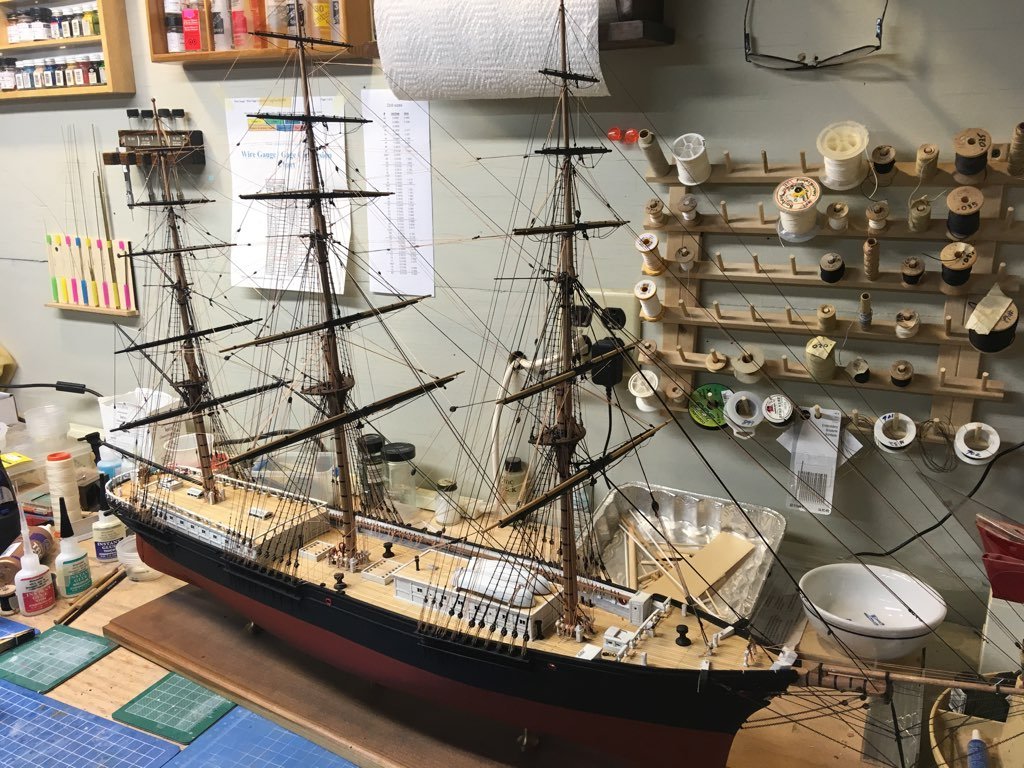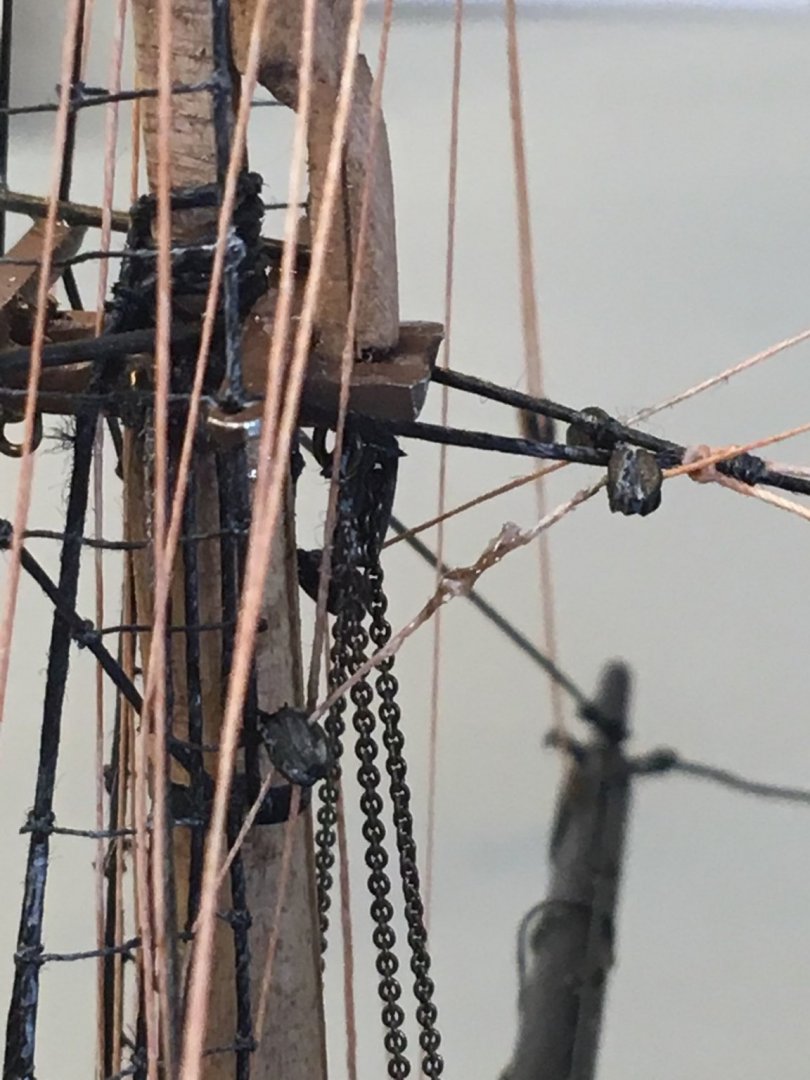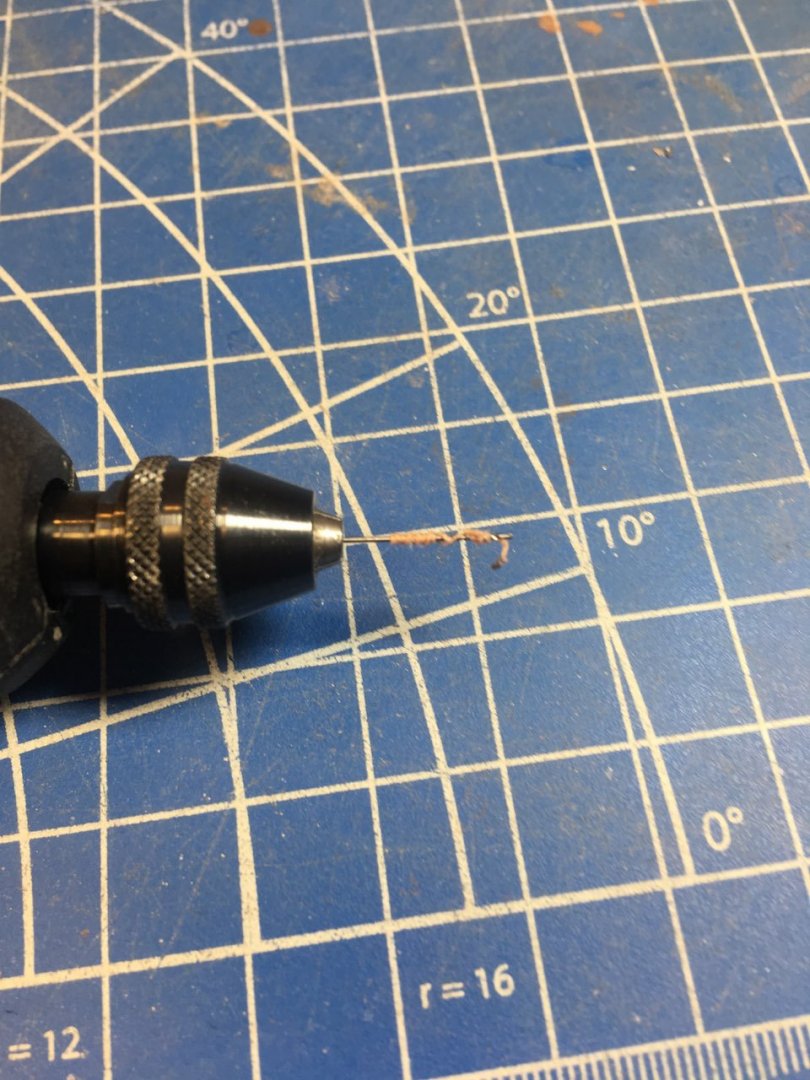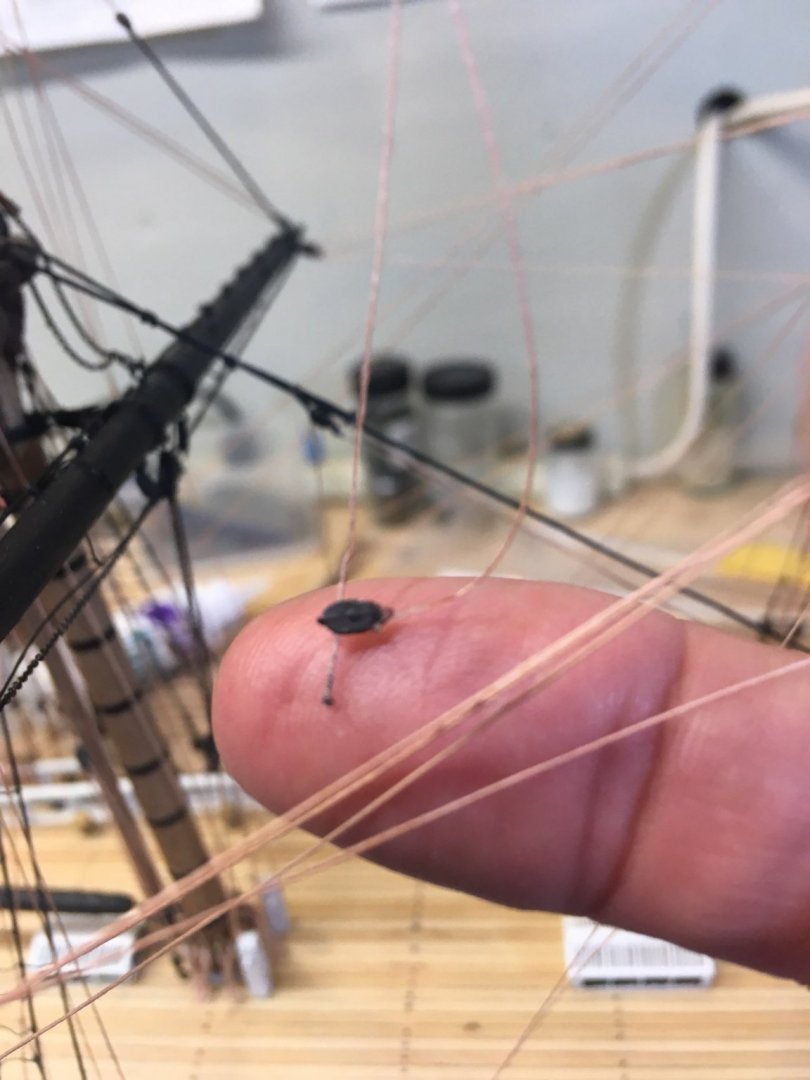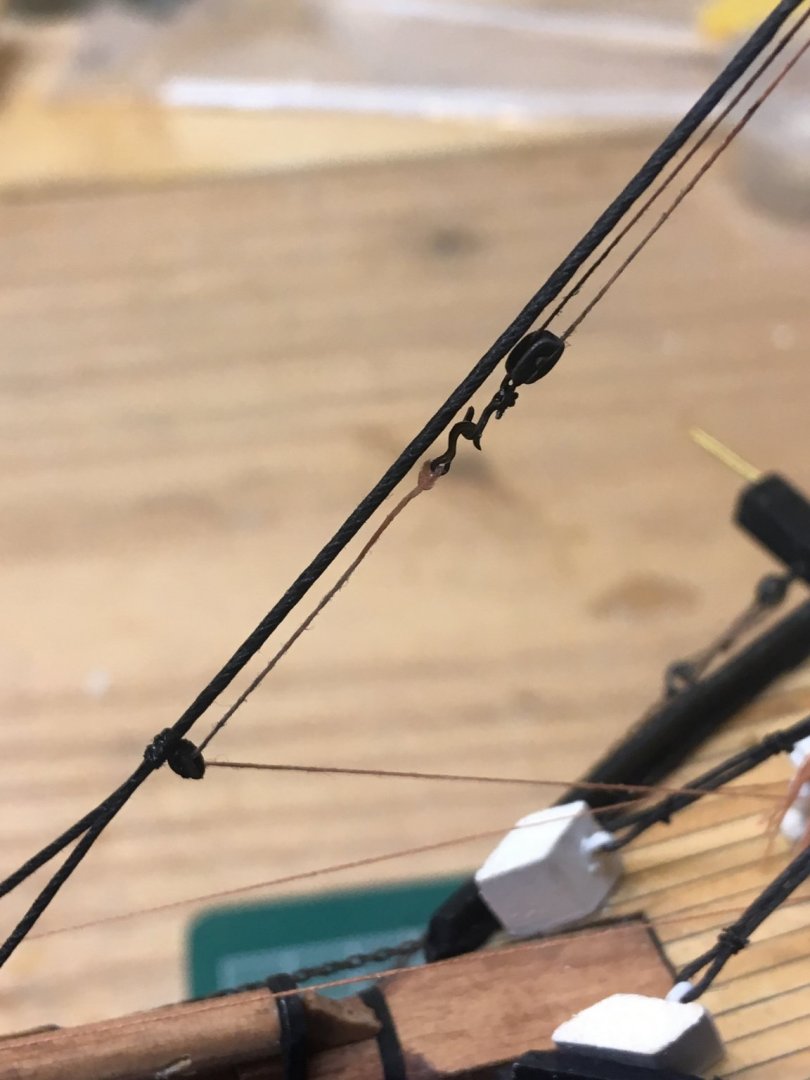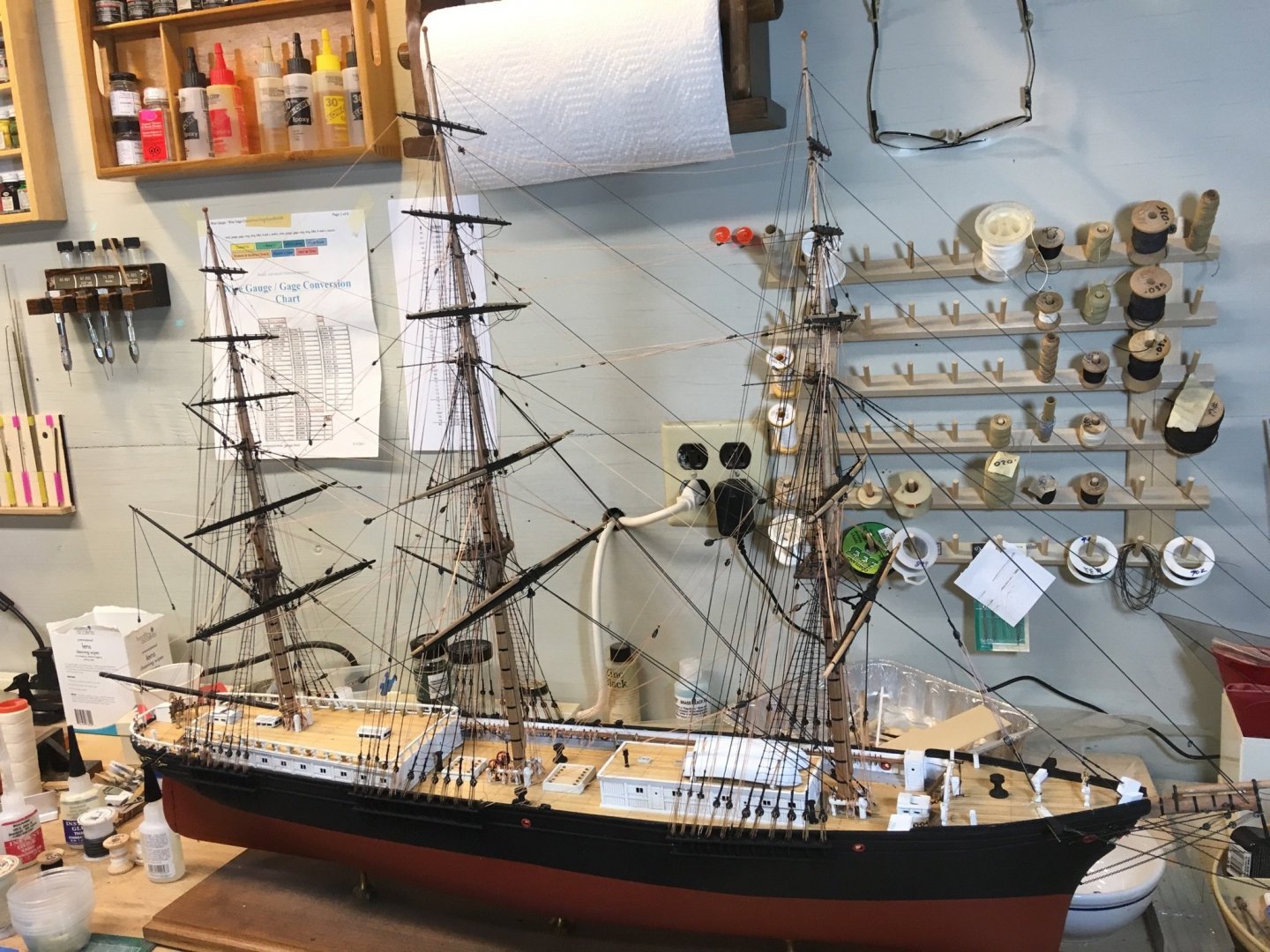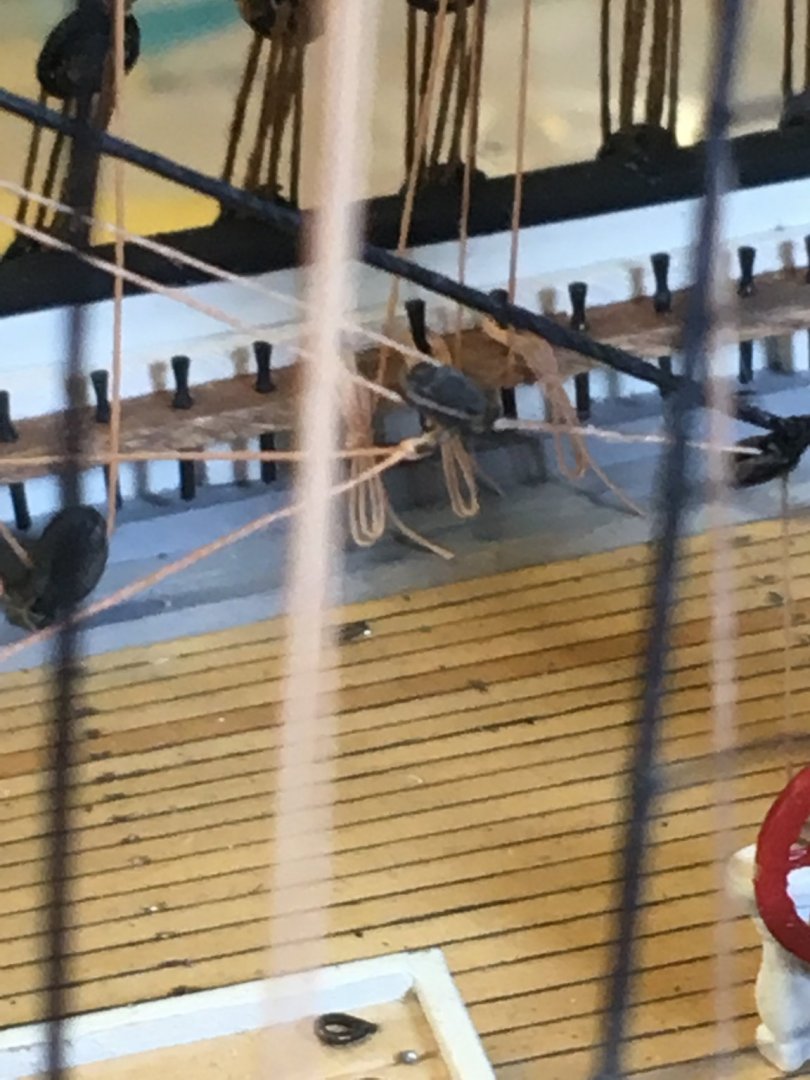-
Posts
1,308 -
Joined
-
Last visited
Content Type
Profiles
Forums
Gallery
Events
Everything posted by MrBlueJacket
-
Looks good to me. I'll be following this. When you're done, you will get a 10% discount on the next kit you get from us. Nic
- 25 replies
-
- Bluejacket Shipcrafters
- Swampscott dory
-
(and 1 more)
Tagged with:
-
We tentatively scheduled the 2021 rigging class for May 24-28, I'm going to push it off until Sept 27 - Oct 1.
- 81 replies
-
- Bluejacket Shipcrafters
- Yankee Hero
-
(and 1 more)
Tagged with:
-
- 356 replies
-
- red jacket
- finished
-
(and 1 more)
Tagged with:
-
The problem is that the other end of the line is glued to a belaying pin and rope coil. So I had to find an inconspicuous spot to splice the new line to the remains of the old.
- 356 replies
-
- red jacket
- finished
-
(and 1 more)
Tagged with:
-
DISASTER! While using a battery Dremel to clear a hole, it accidentally caught one of the brace lines, ripping it asunder And here's the broken line and block that was ripped off
- 356 replies
-
- red jacket
- finished
-
(and 1 more)
Tagged with:
-
I decided I'm tired of weaving through the rigging, so I diverted to the Jib staysail halyards and downhauls, which are out in the open. Call it a mental break....
- 356 replies
-
- red jacket
- finished
-
(and 1 more)
Tagged with:
-
OK, staysail rigging done, back to braces. At this point, all that's left are the top 3 pairs on the mizzen.
- 356 replies
-
- red jacket
- finished
-
(and 1 more)
Tagged with:
-
"it would not keep anyone from going over the side it would just ensure that they went over head first." HA HA HA I can picture that
- 142 replies
-
- alfred
- solid hull
-
(and 2 more)
Tagged with:
-
Never mind, it looks good now!
- 104 replies
-
- constitution
- BlueJacket Shipcrafters
-
(and 1 more)
Tagged with:
-
Yes, your Swampscott shipped out yesterday, 12/23 by UPS. By all means do a build thread, when you are finished, I will give you 10% off the next kit you buy from us. Nic
-
Glad to see you back at it. Nice carrier, BTW Nic
- 41 replies
-
- muscongus bay lobster smack
- BlueJacket Shipcrafters
-
(and 1 more)
Tagged with:
-
Can I assume the beams are not glued in yet? Would be tough to rig the cannon if they were! Nic
- 142 replies
-
- alfred
- solid hull
-
(and 2 more)
Tagged with:
-
Nice to see you again, Jim. looking good! Nic
- 104 replies
-
- constitution
- BlueJacket Shipcrafters
-
(and 1 more)
Tagged with:
-
Yes, it's me. Nic
-
Hi Allan, I really don't know. The research on this kit was done in the early 1980's. What I mentioned is what is on the plans. The end of the halyard attaches to a single becket block, down to a single block on deck, back up to the block, then to a belaying point.
-
Lines 30 & 31 run through a sheave in the mast and are identified as yard halyards.
-
The lower yard is, indeed, held up by a chain sling. To get it there, a temporary block and tackle would have been fixed to the mast cap. For the top and topgallant yards, they were hauled up and held with halyards, labeled # 30 and 31 on the plans. Hope this helps. Nic
-
So I have finished the braces on the fore and main masts. Looking back on the rigging diagram, I realized I had forgot to do the staysail rigging before the braces. Now I have to weave through the braces, because the staysail rigging hangs on the stays, which of course are in the middle. Here's a picture of the first one, only 5 more to go. *sigh*
- 356 replies
-
- red jacket
- finished
-
(and 1 more)
Tagged with:
About us
Modelshipworld - Advancing Ship Modeling through Research
SSL Secured
Your security is important for us so this Website is SSL-Secured
NRG Mailing Address
Nautical Research Guild
237 South Lincoln Street
Westmont IL, 60559-1917
Model Ship World ® and the MSW logo are Registered Trademarks, and belong to the Nautical Research Guild (United States Patent and Trademark Office: No. 6,929,264 & No. 6,929,274, registered Dec. 20, 2022)
Helpful Links
About the NRG
If you enjoy building ship models that are historically accurate as well as beautiful, then The Nautical Research Guild (NRG) is just right for you.
The Guild is a non-profit educational organization whose mission is to “Advance Ship Modeling Through Research”. We provide support to our members in their efforts to raise the quality of their model ships.
The Nautical Research Guild has published our world-renowned quarterly magazine, The Nautical Research Journal, since 1955. The pages of the Journal are full of articles by accomplished ship modelers who show you how they create those exquisite details on their models, and by maritime historians who show you the correct details to build. The Journal is available in both print and digital editions. Go to the NRG web site (www.thenrg.org) to download a complimentary digital copy of the Journal. The NRG also publishes plan sets, books and compilations of back issues of the Journal and the former Ships in Scale and Model Ship Builder magazines.




